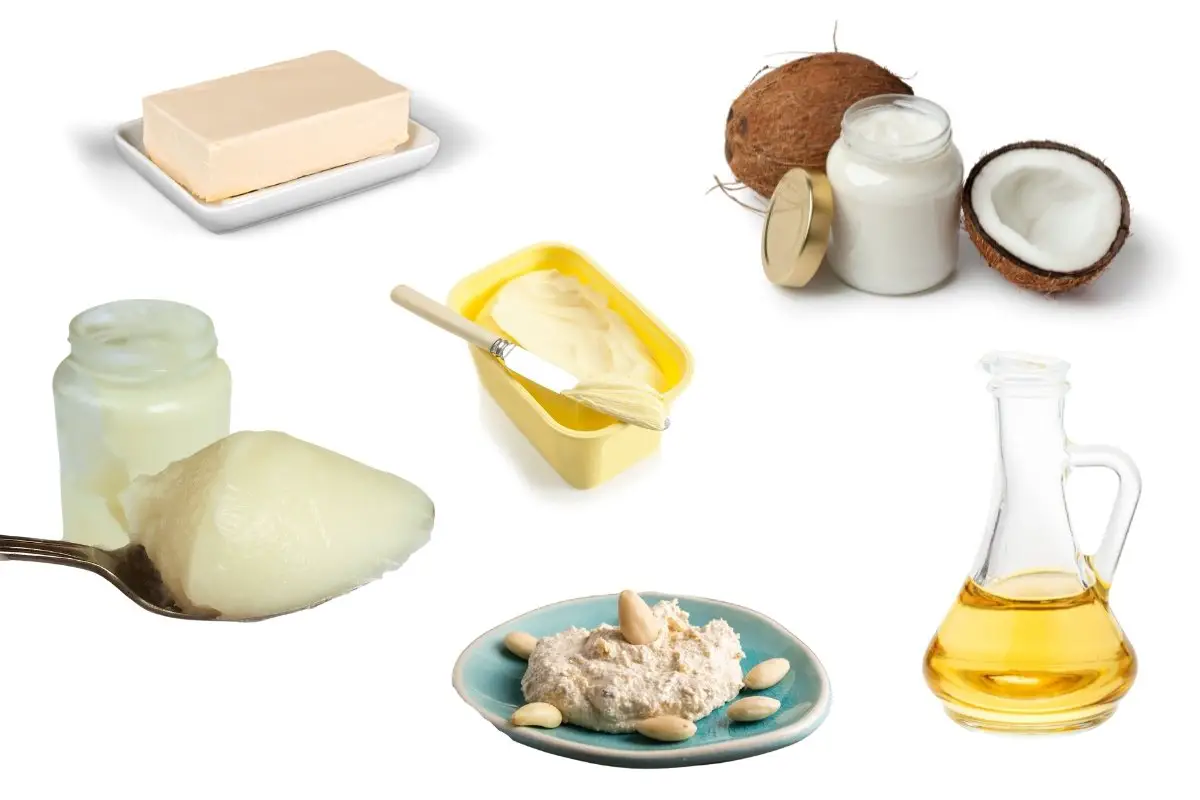Last Updated on January 23, 2022
The search is over for a high ratio shortening substitute! Nowadays, there are many types of shortening, and it consists of any fat. These can be margarine and butter. Besides, it is solid at room temperature. In addition to that, the most popular shortening is vegetable shortening with a hundred percent fat content.
In most cases, you use shortening in baked goods such as cookies and cakes. Additionally, you use it to make the flour more crumbly for baking. Because of this, it can be either vegetable oil or animal fat. Essentially, vegetable oils are in liquid form. Then, hydrogenated to solidify as fat. As a result, it becomes flavorless, and you commonly use it to make the baked products flaky and light.
High Ratio Shortening Substitute
Keep in mind that the hydrogenation process produces saturated fats and trans fatty acids that are not healthy. So with that, please use the closest substitute. Not only that but also a fundamental understanding of shortening is essential. Unfortunately, though, substitutes may modify the texture and taste of the final product.
Moreover, remember that butter has a small amount of water content. In that regard, it is typically about eighty-five percent fat and fifteen percent water. As a result, the extra water content in butter may change the flavor, texture, and consistency of baked goods. Again, though, bear in mind that it varies from brand to brand.
Furthermore, using butter as a substitute for high ratio shortening when baking leads to softer cookies. In addition to that, the cookies will spread out more. Besides that, butter has a low melting point.
Shortening Alternatives
1. Butter
The best thing about butter is that you can use a similar amount with high ratio shortening in the recipe. So with that, if you do not have any shortening on hand, it would be best to use butter. Not only that but also your baked goods will have a rich buttery taste. However, they would not turn out as flaky as opposed to using high ratio shortening.
Additionally, ensure that the butter’s taste suits the recipe for biscuits, cakes, and pastries. Keep in mind that health-conscious individuals prefer low-fat versions of these products. Unfortunately, though, low-fat versions of butter may not be as effective as high ratio shortening. The main reason is that they do not melt easily.
2. Vegan Butter
It would help to use vegan butter since that are many of it on the market nowadays. In that regard, feel free to use it when you need an alternative for shortening called for in a recipe. With that, add about one to two tablespoons per cup of high ratio shortening. Make sure to do this to achieve an accurate fat-to-water ratio.

3. Coconut Oil
Remember that coconut oil is an excellent high ratio shortening substitute. Besides, it is vegan and has the same texture. Not only that, but also you can swap it in one-for-one. However, keep in mind that it will likely provide your baked goods with a slight coconut taste.
4. Margarine
You can utilize margarine to substitute for high ratio shortening in baking recipes. If you have some of it on hand, make sure to add an extra tablespoon of margarine. Ensure to do this for each cup of the high ratio shortenings. Bear in mind that margarine has water. In addition to that, it contains lower fat content. That is why it would help to use a little more margarine that will yield a greater outcome.
Furthermore, it would help to add flaxseed powder with margarine. Likewise, use it as a great alternative for high ratio shortening. So with that, combine about fifty percent of margarine with approximately fifty percent of flaxseed powder. After that, add it to the baking batter. In this regard, it is more appropriate for cookies since they become sweeter and denser.
Betty Crocker’s International Cookbook
5. Vegetable Oil
Vegetable oil is indeed a great shortening replacement, especially if a recipe calls for melted shortening. But, do not use vegetable oil as a substitute for shortening in recipes like scones, pie dough, and biscuits. Besides that, you will not get pockets of fat. Because of this, the dough will not puff up correctly.
6. Lard
Lard is ideal for recipes that can go savory such as pot pie, savory scones, biscuits, and cornbread. Because of that, lard is an excellent substitute for shortening. In addition to that, lard is a non-hydrogenated fat. For this reason, it is delicious and has no artificial additives. Therefore, lard is one of the ideal choices for high ratio shortening alternatives.

Zarah is an experienced pastry chef whose creations have delighted countless customers. With a passion for baking, Zarah has developed a unique style that combines classic techniques with modern flavors. Her desserts are consistently crafted with the finest ingredients, and her attention to detail is evident in the stunning and delectable results. Zarah has a wealth of experience in the pastry kitchen, and loves to share her knowledge with others. Whether it is teaching a class or creating a custom cake for a special occasion, Zarah is committed to making sure every customer is satisfied.


